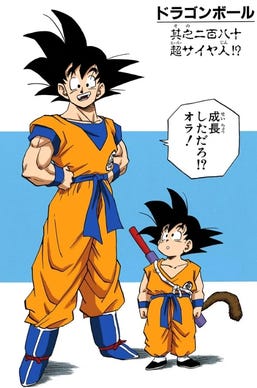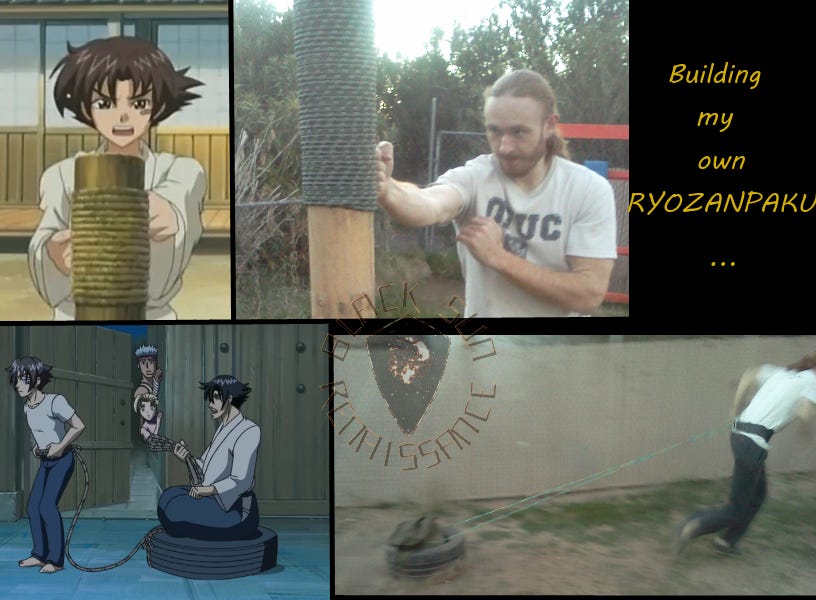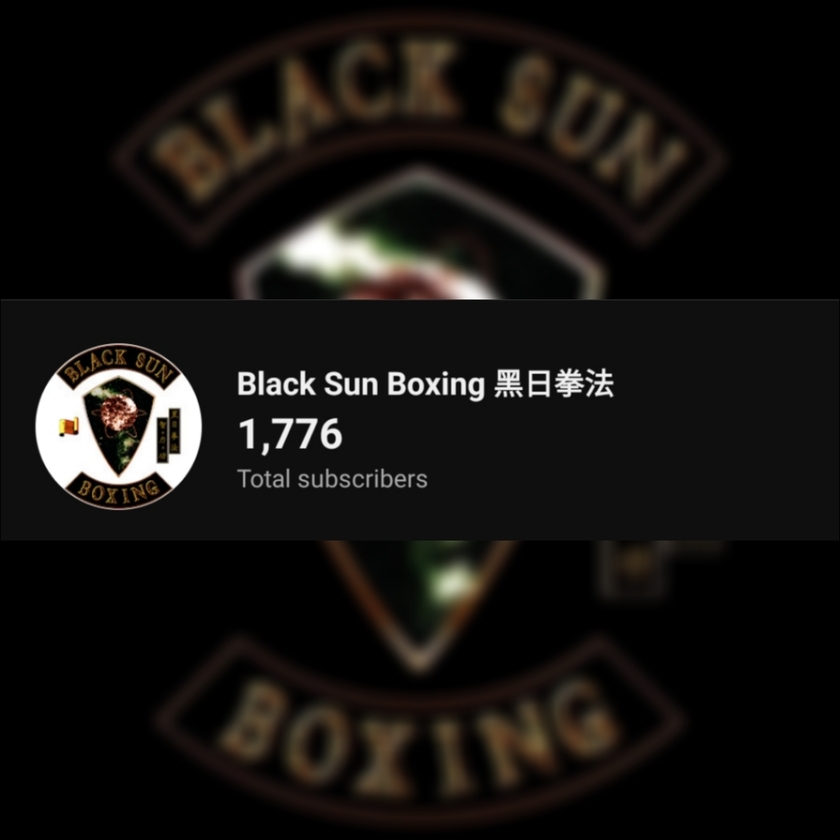Black Sun Boxing
This is the place to keep up with the greater global Black Sun Boxing community. We will be offering training courses and general commentary on our martial arts practice and continuing study.
Interested? Want to learn more about the community?
Dragon Ball In Real Life | Making A Case For Goku's Martial Art In The Real World
This is a plain text only version of the full article. Please visit our Substack for the full article with links, images, and video. https://blacksun.substack.com/p/dragon-ball-in-real-life?s=w
After a big mistake of deleting nearly 5 years of blogs, I’ve decided to start writing again. Hopefully this time I can keep my finger off the doomsday switch.
I’m starting again with something in the realm of entertainment. The subject matter is pure fantasy, and this entire post is an exercise in analysis. I expect I’ll do this again with other fictional properties, but don’t put me on a deadline.
That being said, let’s get the obvious out of the way first. Dragon Ball and all subsequent installments of the franchise, in all media, is purely fantasy, and is not meant to represent reality, including the martial arts and related training therein. In most cases, writers, directors, producers, animators, etc. are not skilled exponents of any system of training, and may rely on either subject matter experts, in the best case, and imagination, in the worst case. As for this essay, I am analyzing the martial arts of the Dragon Ball universe (in part) as a multi-style practitioner of over 20 years, an amateur researcher, and a professional teacher of Wing Chun Kung Fu (and more). This article will also utilize the myth of unified “Wudang” arts, despite there being no real evidence of such a connection historically. Please note that this is an exercise in FUN above all else, and that this does not constitute any sort of training (or otherwise) advice.
Dragon Ball, and its subsequent installments, exists in a world of high fantasy. Akin to the martial epics written in popular fiction in the rapidly changing Chinese landscape of the 20th century, we nevertheless must go back further to get to our origin. Dragon Ball is loosely, very loosely, based on the Chinese classic Journey To The West, written during the Ming Dynasty, based somewhat on the journal of a monk from the Tang Dynasty, starting the journey in Shaanxi Province (based on the historical Monk’s location).
Journey To The West tells the tale of the Monkey King, Sun Wukong, traveling with companions to gain the Buddhist sutras. Really, Wukong is not the main character, but the monk he travels with is. We’re not going to worry about that, and the similarity to our subject more or less ends after the Dragon Balls are collected the first time. However, this is an important jumping-off point for our martial comparison.
Son Goku is the Japanese reading of Sun Wukong. Our hero Goku is The Monkey King at his very foundation, regardless of how much he has evolved over the years. So what do we know about the Monkey King’s training? He was born from a stone, and nourished by the 5 Elements. He studies the Tao, and learns mystical powers and combat.
Here is our first clue. He is trained in the Tao, and much of the story focuses on beings of Taoist mythology. Now, China is not well known for religious exclusivism, and one can have both Buddhist and Taoist traditions in one’s practice. In fact, this story is a Buddhist journey, featuring a preponderance of Taoist symbolism. And, to speak to our main inquiry, many Chinese martial arts have both Taoist and Buddhist symbolism in their practice. The division of “Shaolin” (Buddhist) and “Wudang” (Taoist) martial arts is a relatively modern one. Nonetheless, we have a character who is primarily educated in the Tao. This will set the parameters for aligning Goku’s martial art with available practices in the real world.
Now we must depart from the Journey To The West, and look to Goku’s teachers in the canon of Dragon Ball. We will not go into either Z, GT nor Super. Dragon Ball Z has some interesting pieces of the puzzle, but largely Goku’s style doesn’t change after his training with the Kais, it just becomes more refined, he gets stronger, and learns a couple new tricks. GT is no longer canon, and Dragon Ball Super is so recent, and further down the rabbit hole of fantasy, that it will warrant separate analysis at a later date. Also, for the most part, Goku uses the same techniques in the later series, thus not offering much additional data for his primary training/fighting style.
Goku’s first teacher was his Grandpa Gohan, who learned martial arts from the Turtle Hermit Master Roshi (we’re not going to quibble about Japanese translations of names here). Goku himself later finds the Turtle Hermit himself and is accepted as a disciple. Now this is important: along with Goku, another disciple is accepted: Krillin. Krillin was formerly trained at the Orin Temple, which is roughly an analog of the Shaolin Temple. This is confirmation that Roshi’s style is NOT Shaolin, and since Dragon Ball was written in the late 20th century, the popular perception of a division between Shaolin and Wudang styles was well established. This could mean that Roshi’s style is unique or exotic, but as we mentioned above, Goku’s source, The Monkey King, was trained in the Tao. This goes a long way to say that Roshi’s style is fundamentally analogous to Taoist, or Wudang martial arts. Also, Roshi is a Hermit, a common theme in Taoist martial arts mythology.
Our next piece of evidence is adjunct here, and that’s in Roshi’s title. He is the Turtle Hermit. and his is the Turtle School. There is no turtle style martial art, however, there is some important turtle mythology in Chinese culture. First is the Ao, a turtle whose legs were cut off to prop up the sky. This one’s not terribly relevant. And then we have the Black Tortoise who is also used in Journey To The West. The Black Tortoise has a Taoist myth surrounding it, and in the Wudang 5 animals qigong, there is a turtle form:
This form represents a sea turtle, much like Roshi’s close anthropomorphic animal friend, and appropriate to his tropical island setting. Of course, this is not a martial art, but an exercise for internal development. So what about martial arts? Well, we’re not lost there either. Within the Wudang art of Xing Yi there is a 12 animal form. One of the 12 animals is a mythological water beast. There is little consensus that I can find (as is typical of the Chinese martial arts) but mostly it is the tuo, which is based on a crocodilian, but is not necessarily an alligator or crocodile. However, many lineages use gui, which simply means turtle or tortoise. Some have interpreted as a snapping turtle, others a sea turtle. Since Roshi once called Baby Gamera for a ride, we might consider a snapping turtle to be appropriate as a secondary interpretation, and may be a hint at the tuo, but the sea turtle seems most direct. Also, the character for gui is the same as what Roshi uses for his school symbol.
So now that we have a case for what Master Roshi teaches, and we know it’s in the framework of a larger martial arts tradition, who taught him?
Master Roshi learned from Master Mutaito and Korin. Not much is known about either, except that they are master martial artists. Mutaito’s school is where Roshi was formally trained, and because we mainly know he was famous for his ki techniques, we can assume he comes from a larger tradition of more comprehensive training, something similar to the various Wudang martial arts schools in China. Another clue in this thread in Roshi’s rival Master Shen, The Crane Hermit. Shen learned from the same master, and among his ki techniques, he mastered and teaches levitation, which would fall under something like the Wudang Light Body skill. And because the crane is not one of the Xing Yi animals, but IS one of the Wudang Qigong 5 animals, we still have a connection.
Then there’s Korin. Korin is a lot like a Taoist immortal. Goku himself later meets and trains with Korin, and the Taoist Immortal concept is further solidified. His focus is apparently bringing up Goku’s (and Roshi’s) strength, stamina, and speed. This kind of athletic attribute training is very common in old Chinese martial arts, with lifting odd objects, specialized calisthenics, and, of course, qigong. Even Taichi, a Wudang art, was once full of conditioning practice. This also hints at why Master Roshi focuses so much on physical ability with the young Goku and Krillin.
Later on, after much storytelling, Goku then goes to learn from Kami. Kami’s story is similar to the myth of the Black Tortoise, where in studying the Tao and trying to attain divinity, he had to purge his sins, which then manifested as demons he had to later subdue. Kami’s attendat, Mr. Popo, actually does most of Goku’s training at first. Mostly on sensory development and meditation. This would be Goku’s seguay from primarily physical training to primarily internal training (but still with plenty of external/physical training, such as weighted clothes, and speed work).
So here we are at the end of our analysis of Goku’s fighting style as related to real world martial arts, as far as the original saga goes. Goku is pretty clearly skilled in either a variety of taoist styles of martial arts, or some early “complete” taoist art (that certainly doesn’t seem to exist today). And so my final verdict is that Goku’s training would look like Wudang multi-art training, with a special emphasis on strength and conditioning, developing the external to better develop the internal.
Interested? Want to learn more about the community?
What else you may like…
Videos
Posts
00:19:19
















